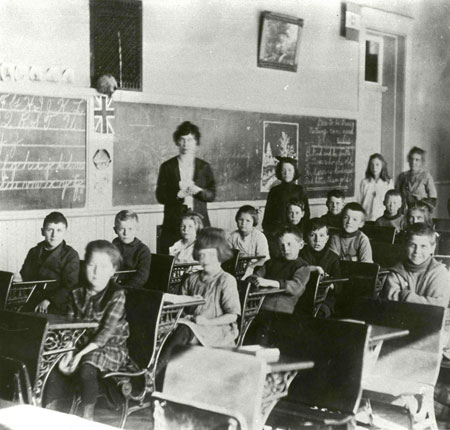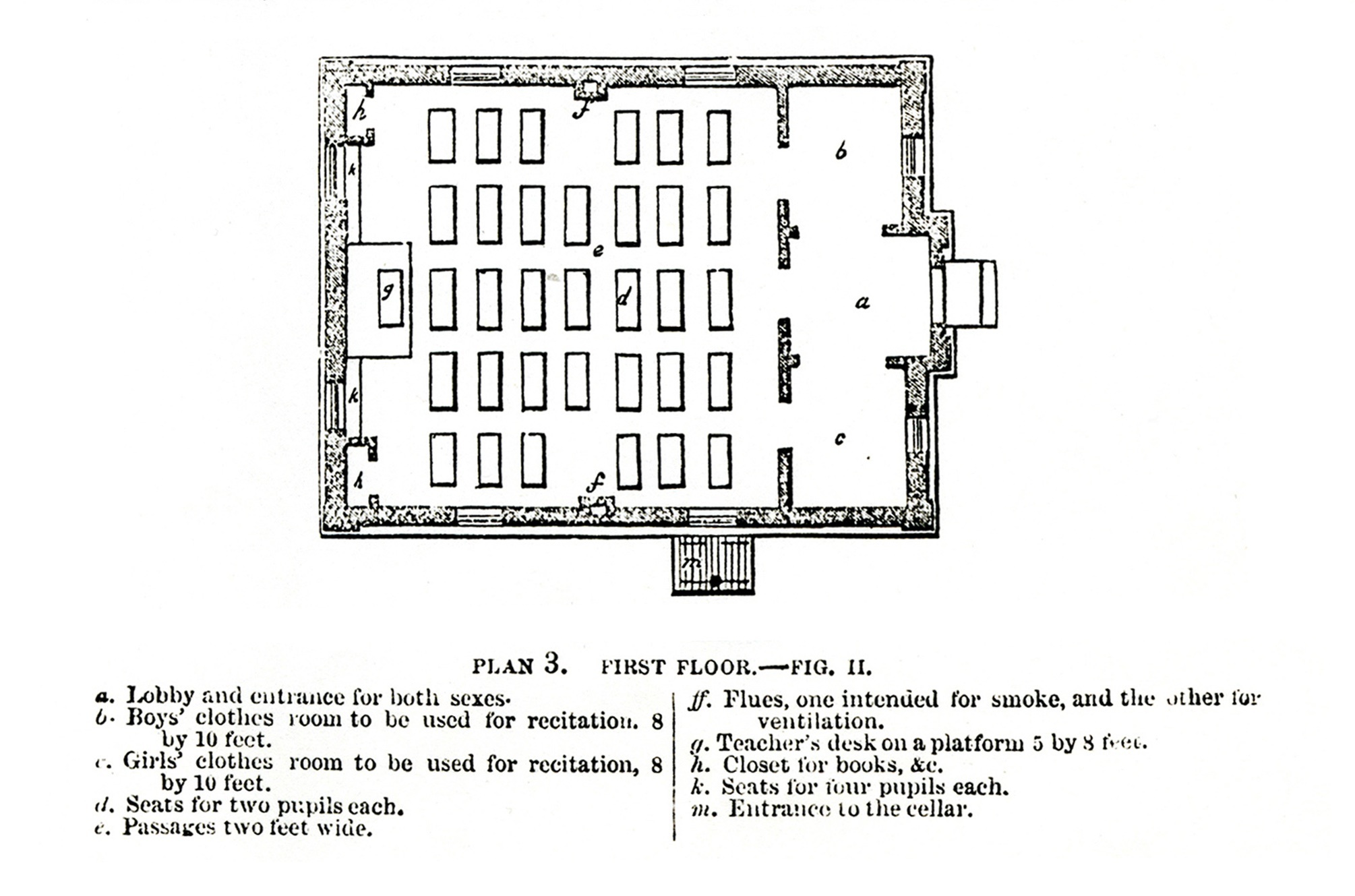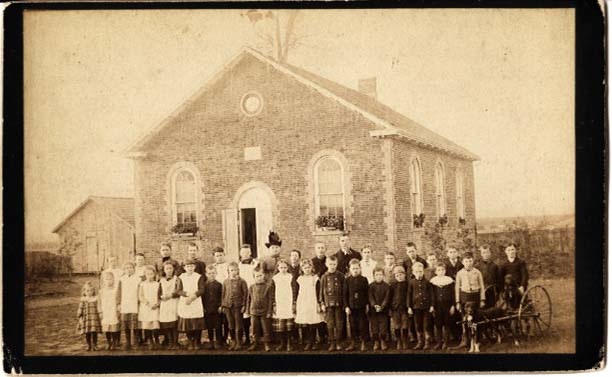There were schools in Ontario as early as the 17th century. There was little consistency to these early schools. Classes were held in kitchens, parlours, churches and even taverns! Private tutors taught subjects ranging from art and etiquette to languages and music.
In the 1840’s Egerton Ryerson, the Chief Superintendent of Education in Upper Canada, introduced reforms to the education system including standard schoolhouse designs that included lots of light, and fresh air.
Parliamentary Acts over the next 35 years further defined the structure for the school system. These acts:
· outlined the responsibilities of trustees, superintendents, and teachers.
· established schools for educating teachers.
· formalized the authority of the General Board of Education,
· created legislation for secondary schools,
· defined attendance requirements,
· established the Education Department, precursor to the Ministry of Education.
 S.S. No. 16 Mount Joy, Markham c.1900
S.S. No. 16 Mount Joy, Markham c.1900
One-room schoolhouses were just that - one room that held the entire student population of the area. One teacher, often only a few years older than the students themselves, taught children from the age of 5 to 16 or older. Class sizes varied from a dozen to close to eighty students depending on the area, season and even the teacher’s reputation! Each grade worked from its own set of readers and lesson books as the teacher taught grades 1 to 8 on a rotating schedule.
Not only did the building serve as the school, but also as the community hub. This was often the location for community meetings, special forums, and social functions such as dances or receptions.
The one-room schoolhouse plays a significant role in the history of Ontario. It represents the basis of education for generations of people who shaped this province and the origins of our modern school system.
Many of the schoolhouses built in this period may still be seen today throughout rural Ontario. Often these buildings have had additions added after the turn-of-the-20th century to meet the needs of the growing population, but are still easily recognizable by their design. Many of these buildings have been preserved and converted into private homes, community facilities, and museums, however you will also see these recognizable shapes crumbling in disrepair and neglect.
Around 1845, there was an S.S. #5 in Markham Township at Brown’s Corners (Woodbine Ave. and Hwy 7).
What did this school look like? We only know that it was a wooden building. From other descriptions of early schools it was likely a single room with benches lining the walls. Students traveled several kilometres to spend their day learning the basics of reading, writing and arithmetic. This “education” provided them with the necessary skills to do what most Canadians did, farming.
Mr. William Stiver taught at this school for 11 years. In addition to teaching, he had to chop wood, start the fire and keep the schoolhouse clean.
As the population of the area grew and reforms in education were introduced, a more modern school became necessary. In 1872 an acre of land in Buttonville was purchased for $100.00 and a new school was built.
The new school’s design was based upon plan 3 as outlined by the Deputy Minister of Education for Upper Canada, J.G. Hodgins, It was a brick building that held desks for sixty-eight students, with a teacher’s platform in the front. A wood burning stove provided heat and doors on either side of the teacher’s platform led outside to separate outhouses and playgrounds for boys and girls.
 Schoolhouse Floor Plan
Schoolhouse Floor Plan
 S.S. No. 5 Markham, c.1883
S.S. No. 5 Markham, c.1883
What does S.S.#5 mean?
It stands for School Section number 5. This school served the fifth school section in Markham.
Rural areas were divided in sections that were about 8km by 8km. A three-person board of trustees managed each school. Anyone who lived within that area attended the school and the families paid taxes to operate the school.
Many of us have heard stories of students having to walk 10 km to get to school. This is a bit of an exaggeration! The longest walk to a rural school was about 4km.
Good pupils in early schools were expected to earn more than high marks. There were many rules to follow and duties to perform.
1. Be early and constant in your attendance at school
2. Regard promptly and cheerfully all the regulations of school
3. Speak and act the truth in all things and at all times
4. Be pleasant and accommodating to your companions
5. While in school improve all your time with a real carefulness
6. Be gentle and civil
7. Keep your books, maps, etc. in good order and well arranged
8. Keep your desk and the floor about it in a neat and cleanly condition
Hodgins, George J. The School House: Its Architecture, External and Internal Arrangements. Toronto. 1857